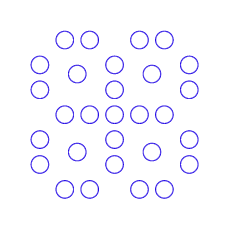Accessibility offers huge opportunities for funders, content creators, and audiences. However, it needs to go beyond technical compliance. We need to think about content, design, and a nuanced view of disability. The end goal should be ‘access for all’.
Within the positive impact space, accessibility now plays an increasingly larger role in conversations of development of digital products.
Those digital products include websites, mobile phone applications, and even PDFs.
This trend has accelerated in recent years.
For instance, a few years ago, the UK’s Foreign Commonwealth and Development Office (FCDO) launched a new requirement for websites produced with public funds to be compliant with Web Content Accessibility Guidelines (WCAG) guidelines.
This is an excellent move.
Similarly, the United States government now requires digital products produced with public funds to be compliant with Section 508 of the Rehabilitation Act.
Again, this is an excellent move.
According to guidelines like these, PDFs should be ‘readable’ by assistive technologies such as audio screen readers to assist audiences with low vision.
Websites should be accessible, for instance, to people who are not operating a mouse.
Below are some basic accessibility considerations for digital products:
- Is it readable, understandable, and legible?
- What is the reading level?
- Is it easy to navigate?
- Is it viewable on all devices?
- Have you made keyboard navigability a priority?
- Do your contractors/ suppliers/ vendors understand accessibility?
- Agree on font size, color contrast, and effective use of white space
- Have you decided on captions for multimedia?
- Can your PDF instead be presented in a more easily accessible HTML format (web pages)?
It is amazing to see accessibility play a larger role in the conversation. But within the positive impact space, it is still not mainstreamed. It remains largely a misunderstood afterthought. Funders and project implementers often seek bare minimum requirements and not much else.
As a starting point, we should at least meet those minimum technical requirements. But here is a potentially controversial question: Is technical accessibility entirely relevant if the source material – the content – remains poorly worded, overtly technical, or very difficult to understand?
Take a moment to think about all the audience groups that can be excluded from inaccessible content:
- Non-native speakers
- People with lower literacy levels
- People with many forms of disability, including physical, mental, permanent, and temporary
- People with differences in mobility, dexterity, strength, and levels of pain
- Non-subject matter experts
- Older people
- People in areas with limited internet access
Too often, accessibility is seen as a technological process requirement through the lens of physical ability. People often think ‘As long as our website passes WCAG 2.1 tests, we can launch.’
The goal of accessibility should be to include as many people as possible. That includes people who might not read at a post-graduate level and who are not familiar with industry jargon.
If a digital product is not accessible from a technological perspective, then it may exclude a percentage of its audience. But if content itself is impenetrable, then it may exclude an even larger percentage of its audience, even if the digital product meets technological accessibility requirements.
For anyone funding a digital project, there is great value in ensuring all forms of accessibility, not just those that relate to technical compliance. That includes consideration of design, content, color, language, and options for assistive technologies.
Conversations around accessibility can come with challenges. Accessibility, after all, can increase cost. It may need additional resources from content creators, designers, and developers.
Meanwhile, digital producers may need to push back on funders and project implementers who seek only accessibility from a technological perspective rather than from a content perspective.
Overall, there is space for all of us as creators to improve accessibility for audiences. That starts with content, readability, and language that can be easily understood and translated. We must move way beyond mere technological compliance.
Read our other accessibility insights

